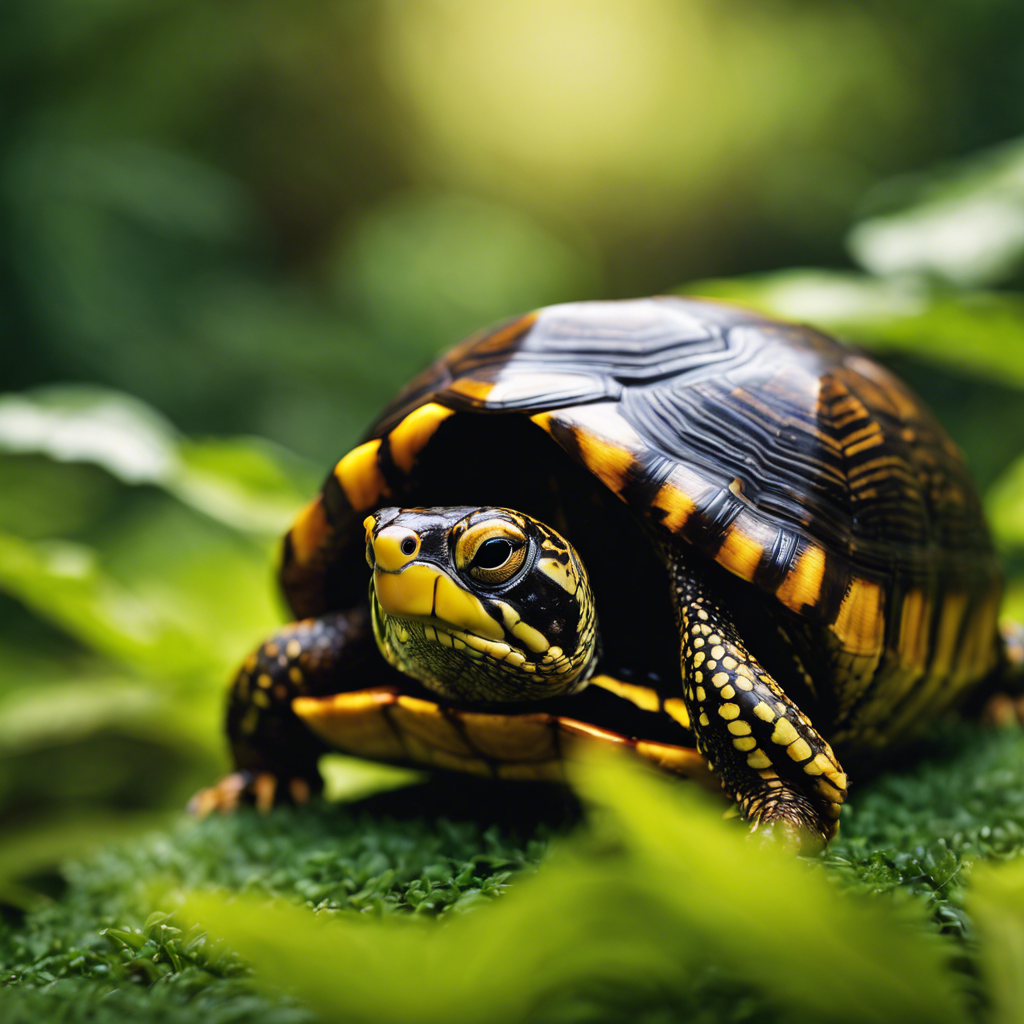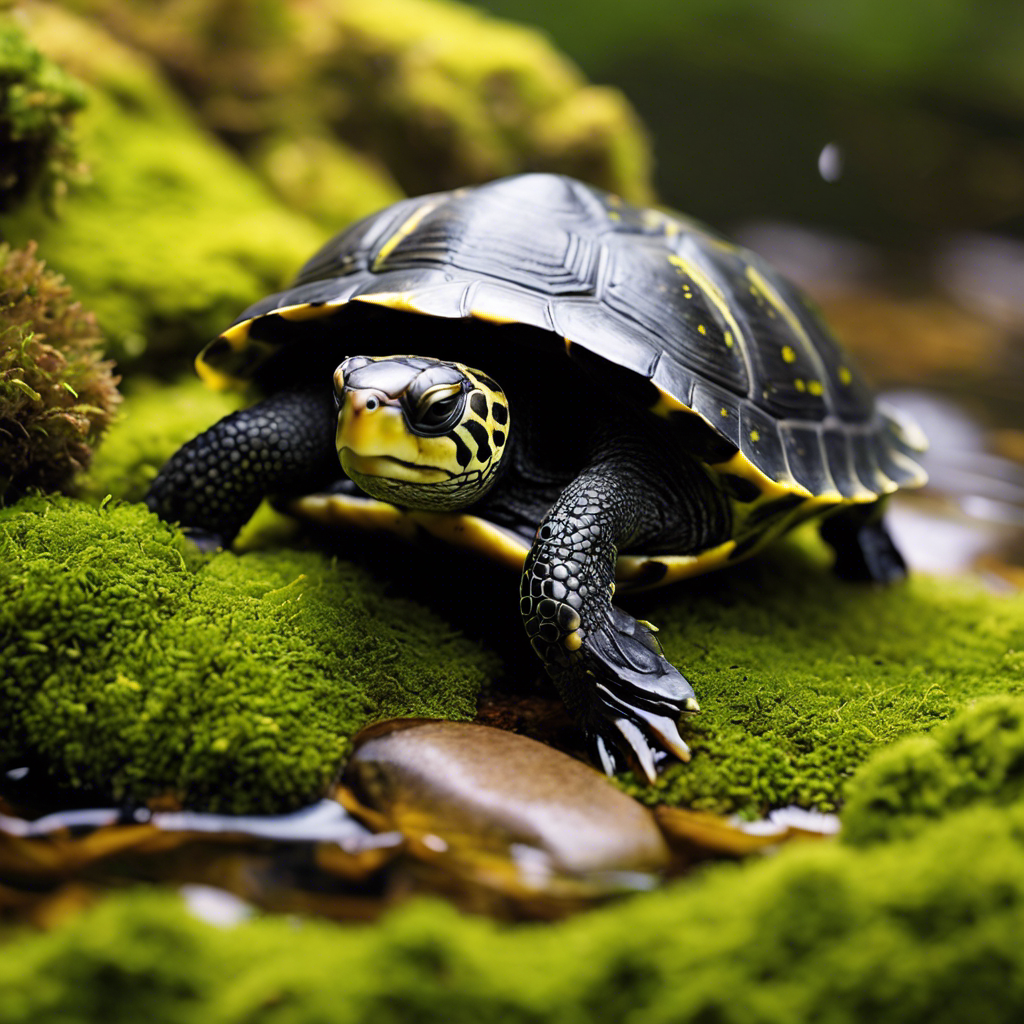As an avid wildlife enthusiast and researcher, my experience with Pennsylvania’s most common turtles has been truly enlightening. I believe that observing the Eastern box turtle’s slow and deliberate movements or catching a glimpse of the elusive snapping turtle has allowed me to appreciate the intricate beauty of these creatures.
Each encounter in their natural habitats has deepened my connection to the state’s ecosystems and the delicate balance within. These turtles hold a special place in my heart, reminding me of the importance of conservation efforts and the interconnectedness of all living beings in Pennsylvania’s rich environment.
Key Takeaways
- Eastern Box Turtle: Declining population in PA, essential for plant diversity, habitat in woodlands and grasslands, can live up to 40 years.
- Painted Turtle: Colorful appearance, found near water bodies, efforts needed for conservation and protection, adult size 4-6 inches.
- Snapping Turtle: Aggressive on land, docile in water, defensive posture with open jaw, subject to harvesting regulations.
- Spotted Turtle: Endangered due to habitat loss, bright yellow spots, inhabits marshes and swamps, conservation critical for safeguarding.
Eastern Box Turtle

The Eastern Box Turtle, with its distinctive shell pattern and declining population status in Pennsylvania, plays a crucial role in maintaining ecosystem balance by controlling insect populations and dispersing seeds. These terrestrial turtles, commonly found in woodlands and grasslands of central and southern Pennsylvania, are facing endangerment due to habitat loss and fragmentation.
The Eastern Box Turtle is a long-lived species, with individuals capable of living up to 40 years. Their hibernation habits during winter months are essential for their survival. As seed dispersers, Eastern Box Turtles aid in plant diversity and regeneration within their habitats.
Conservation efforts are necessary to protect these vital members of the ecosystem and ensure the preservation of their populations in Pennsylvania.
Painted Turtle

Pivoting from the Eastern Box Turtle, the Painted Turtle stands out as one of the most widespread and visually striking turtle species in North America. These turtles, commonly found near water bodies in Pennsylvania, exhibit a colorful appearance with red and black patterns on their carapace edges. Adult Painted Turtles can reach sizes of 4 to 6 inches in carapace length, making them relatively small compared to other turtle species. Their distinct markings, including bright-yellow spots and stripes on their head and neck, contribute to their easily recognizable features. Due to their widespread distribution and vibrant appearance, efforts to conserve and protect these beautiful turtles in their natural habitats are essential.
| Characteristics | Description |
|---|---|
| Carapace Length | 4 to 6 inches |
| Markings | Red and black patterns |
| Coloration | Bright-yellow spots and stripes |
Snapping Turtle

Painted as formidable creatures of both land and water, snapping turtles exhibit distinctive behaviors and characteristics that set them apart in Pennsylvania’s ecosystem. These common turtles are known for their aggressive nature on land but tend to be more docile in water.
Snapping turtles can reach up to 12 inches in carapace length, making them one of the larger turtle species in the region. They’re good swimmers but often prefer to walk along the bottom of their aquatic habitats. When feeling threatened, snapping turtles adopt a defensive posture by raising their hindquarters and displaying a wide-open jaw.
Due to their popularity for their meat, they’re subject to regulations and require a fishing license for harvesting.
Spotted Turtle

Inhabiting marshes, bogs, and swamps in Pennsylvania, the Spotted Turtle is a small species ranging from 3.5 to 4.5 inches in length. This endangered species is recognized by its dark shell adorned with bright yellow spots. Unfortunately, the Spotted Turtle faces a declining population primarily due to habitat loss and human interference. Conservation efforts play a critical role in safeguarding this unique turtle species native to Pennsylvania.
Spotted Turtle Overview
| Characteristic | Description |
|---|---|
| Size | 3.5 to 4.5 inches |
| Habitat | Marshes, bogs, swamps |
| Unique Feature | Bright yellow spots on shell |
| Conservation Status | Endangered in Pennsylvania |
Wood Turtle

The Wood Turtle, a medium-sized turtle species in Pennsylvania, exhibits terrestrial habits and is known for its preference for habitats near water sources.
- The Wood Turtle measures 5.5 to 8 inches in length, making it a medium-sized turtle species in Pennsylvania.
- Known for its terrestrial habits, the Wood Turtle prefers habitats near water sources and often winters at the bottom of deep pools or rivers.
- Fossil remains of the Wood Turtle have been found dating back 11,000 years, indicating its long presence in Pennsylvania.
- The Wood Turtle population is declining, leading to conservation efforts and scientific studies focused on this species in the state.
- This semi-aquatic turtle species is characterized by its distinctive appearance and behavior, contributing to its status as a notable turtle in Pennsylvania.
Bog Turtle

Endangered due to habitat loss and human interference, the Bog Turtle, one of Pennsylvania’s smallest turtle species, faces critical conservation challenges. Measuring only 3 to 3.5 inches, these critically endangered turtles inhabit swamps, muddy-bottomed streams, and bogs.
Their populations are dwindling in Pennsylvania primarily due to changes in their natural habitat and human activities. Bog Turtles, the oldest turtle species in the state, require urgent conservation efforts to prevent their extinction. Preservation of the swampy areas and restoration of their habitats are crucial steps in safeguarding these small turtles.
Conservation initiatives play a vital role in ensuring the survival of the Bog Turtle and maintaining the delicate balance of Pennsylvania’s ecosystems.
Eastern Musk Turtle

Found in sluggish streams and still waters, the Eastern Musk Turtle, also known as the Stinkpot, boasts a length ranging from 2 to 4.5 inches. These turtles emit a foul, musky odor when threatened, a defense mechanism unique to this species. Here are some key points about the Eastern Musk Turtle:
- The small size of the Eastern Musk Turtle makes it easily identifiable in its habitat.
- They exhibit unique behavior by climbing trees to evade predators.
- Despite their size, these turtles are vital members of the diverse turtle species in Pennsylvania.
- Eastern Musk Turtles contribute to the ecosystem dynamics in sluggish streams and still waters.
- Conservation efforts should focus on protecting the habitats where these turtles reside to ensure their continued presence in Pennsylvania.
Frequently Asked Questions
What Is the Most Common Turtle in Pa?
In Pennsylvania, the most common turtle is the Eastern Box Turtle. These terrestrial turtles dwell in grasslands and woodlands, particularly in central and southern regions. Recognizable by their high-domed shell and varied colors, they are crucial for conservation efforts.
What Turtles Are Invasive to Pennsylvania?
In Pennsylvania, the invasive Red-eared Sliders and Yellow-bellied Sliders disrupt local ecosystems. These non-native species outcompete native turtles and reproduce rapidly. Efforts are ongoing to manage and control their populations to protect the state’s biodiversity.
Does PA Have Tortoises?
In Pennsylvania, tortoises are not native due to the state’s climate being more suitable for turtles. Turtles, thriving in aquatic environments, play vital roles in the ecosystem. Turtles, not tortoises, are prevalent in Pennsylvania, contributing to biodiversity.
What Turtles Are Endangered in Pa?
In Pennsylvania, endangered turtles include the bog turtle, spotted turtle, Blanding’s turtle, Eastern mud turtle, and Northern red-bellied cooter. Conservation efforts are vital to protect these species from habitat loss and human impact.
Conclusion
In conclusion, the diverse range of turtle species in Pennsylvania, such as the Eastern box turtle, painted turtle, snapping turtle, and others, play a crucial role in the state’s biodiversity.
Conservation efforts are essential to protect these species and their habitats from threats such as habitat loss, pollution, and climate change.
By working together to preserve these turtles and their ecosystems, we can ensure a sustainable future for Pennsylvania’s rich turtle populations.

An avid ornithologist, zoologist and biologist with an unwavering passion for birds and wild animals.
Dr. Wilson’s journey in ornithology began in childhood and led him to obtain a Ph.D. in Ornithology from the prestigious Avian Research Institute. He has worked closely with renowned experts in the field and conducted extensive research and field studies globally.

